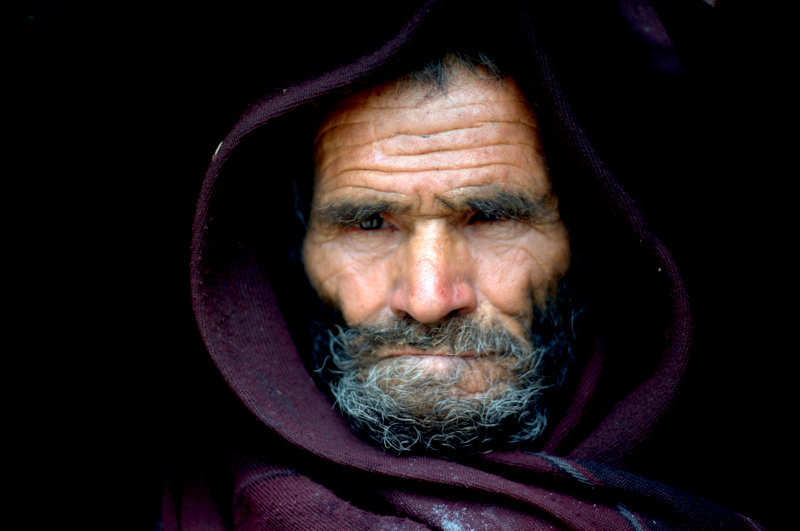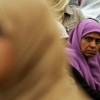Bordering Isolation: on the margins of the Middle East
 Photo: Kemal Vural Tarlan
Photo: Kemal Vural Tarlan
By no means all of the 10-15 million Alevis in Turkey are Domari speakers, but a majority of Domari speakers are Alevis or, crucially, perceived to be so. In a transitory population, such distinctions between Alevi and Domari, Domari and Kurd, frequently blur. The European Roma Rights Centre (ERRC) claims that Turkey was already home to 500,000 Domari speakers before the Syrian influx, in a combined total of five At this fault line between two hard-pressed minorities much of the worst violence experienced by the Dom has erupted million Roma, Dom and Lom “gypsies”. But most assimilated Domari speakers go through phases of hiding their ethnic heritage, passing as Kurds when settling in new towns. And it is at this fault line between two hard-pressed minorities that much of the worst violence experienced by the Dom has erupted. In a notorious instance in 2006, two Dom teenagers working as shepherds were lynched in the city of Silvan, shortly before their employers, an impoverished Kurdish farming family, were due to pay them for seven months’ work. The local police repeatedly failed to investigate the deaths.
Syria’s Dom population is a marginal group whose nomadic existence has left them barely documented and all but invisible in their place of refuge. The question of whether the label “gypsy” should be used for the Dom is one on which ethnologists fiercely disagree – Shaima herself insists that her people have no ethnic relationship to the “criminal” Roma. But here in eastern Turkey, the locals are in no doubt.
Çingene, a regional leader of the ruling AK Party, spits out when asked about provision for the Dom population. And then, reverting to English: “Gypsies. Why do you want to go near them? Anyway, there are none here. They go to dirty places, like Istanbul.”
The 2.2 million Dom have always lived on the margins of society. Most Middle East states disclaim the need to provide Domari language support in schools, or seasonal health clinics at Dom campsites. One of the few places to offer them some shelter was Saddam Hussein’s Iraq, at some cost to their reputation: a few years ago I met young Iraqis in Istanbul who spoke with nostalgia of Baghdad’s red-light Kamalia district, in which Dom women worked as dancers for Saddam’s top commanders – and allegedly as courtesans. Since the US invasion in 2003, religious sects have taken turns to purge Baghdad of the Doms’ seemingly unIslamic influence: Kamalia has been renamed Hay al-Zahra after the distinctly more virtuous daughter of the Prophet, and in 2005 Reuters and the Dom Research Center reported that the army of Muqtada al-Sadr had unleashed mortar rounds on a makeshift village of 250 Dom families near Diwaniya, killing one and forcing the encampment to disband. “Iraqi leaders of all sects repeat the same line about the Dom people: ‘They are alcohol-sellers and whores, so there is no place for them in an Islamic nation,’” says photographer Vural Tarlan. “They can no longer punish Saddam, so they have decided the Dom symbolise his decadence. This is their revenge.”
Now it is the turn of Syria’s Dom population to be cast adrift. Before the civil war, tens of thousands of Dom made their winter homes in Syria, mainly in Damascus and Aleppo. SIL International, the UNESCO recognised body which researches endangered languages, claims 37,000 Domari speakers were left in the country in 2005, but linguist Dr Bruno Hérin, one of the world’s few experts on the Domari tongue, cautions against exact figures. Vural Tarlan suggests that the number under the radar may be far higher: “There is no official recognition whatsoever, in Syria, just as in Turkey, Lebanon, Jordan or Palestine.” So most Syrian Dom have lived in hiding, passing as Kurds for official purposes. Hérin’s research suggests that up to 10,000 Domari speakers based themselves in Damascus before the war – alongside scratching a living as musicians, blacksmiths and tinkers, the Dom appear to have cornered the Syrian market in cut-price dentistry.
And that’s not all. The ERRC’s 2008 report on violence against Roma and Dom populations identified a disturbing pattern of Dom women marrying into Kurdish families, only for their in-laws to respond with violence when they discovered that the new wife was merely “passing”. Frequently Dom women are on the receiving end of violence from both their own and neighbouring communities. In a typical instance in 1997, a woman from the town of Van was discovered by her husband’s Kurdish family to be of Dom origin – her in-laws expelled her, but her brother escorted her back to her husband’s home to avert dishonour. Shortly after, she was found shot to death, almost certainly at the hands of her husband.
In the same town, locals tell the story of a young Dom woman convicted of the murder of her Kurdish husband. At her trial, neighbours testified that a functional marriage had suddenly turned sour when, after seven years, the husband had discovered his wife’s Dom origin. He had responded with extreme physical abuse, marking her breasts with scissors and publicly harnessing her to carts.
But for all this doom and gloom, there are growing signs of Dom-Kurd integration throughout eastern Turkey. A century after the genocide, the old Armenian quarter in Gaziantep once again bustles with life. The Armenian quarter is long gone, but its narrow houses are home to an assortment of Kurds, Dom and Syrian refugees, living alongside each other. Together, they form the city’s second economy: Gaziantep, one of the world’s fastest growing cities, is hungry for cheap labour to support its booming agricultural industry. So when Turks come home to sleep, the refugees go out to cover the nightshift in farms and factories.
In a quiet alley in this quarter is Kemal Vural Tarlan’s Kirkayak Arts Centre. It is the only place in Gaziantep you can watch an independent film – and the locus of a project to forge a new relationship between Kurds and the Dom travellers they have so long resented. Vural Tarlan is a Kurd. He tries to give Dom refugees a voice through phototherapy: every weekend he holds workshops for the Dom community, teaching them to use a camera, and encouraging them to take photographs of their experiences throughout the week. “These people are travellers,” he says. “They come to my workshops for two months, three months, then they move out of town. But when I print their photographs, I find they have left something permanent behind.” He regularly holds exhibitions dedicated to Dom photography in universities throughout Turkey, visual campaigns to remind Turks of the forgotten communities living alongside them.
But Vural Tarlan doesn’t just give the Dom people artistic representation. His arts centre is a hub for the Kurdish community in Gaziantep – and it is through him that Gaziantep’s Kurds find themselves meeting the despised Dom people as equals, neighbours, even artistic partners. Vural Tarlan believes things are improving between the two groups, citing regional government efforts in neighbouring Diyarbakır to ensure hate crimes reported by the Dom are followed up by police. In a region under intense demographic pressure, racial tensions are not going away any time soon. But leaving Vural Tarlan’s workshop, surrounded by self-portraits of smiling, confident Dom children, it is hard not to feel hopeful.
Some names in this article have been changed.
Pages: 1 2




